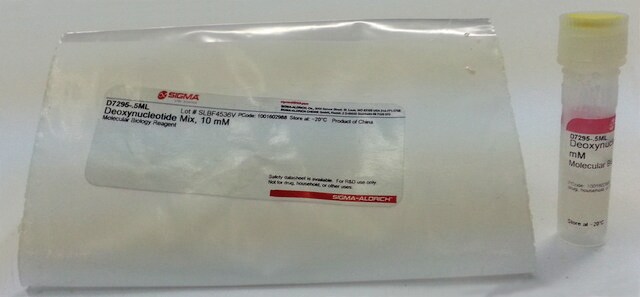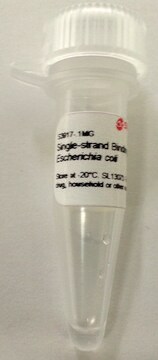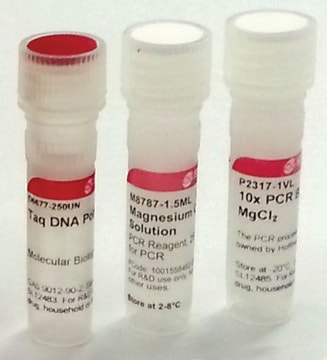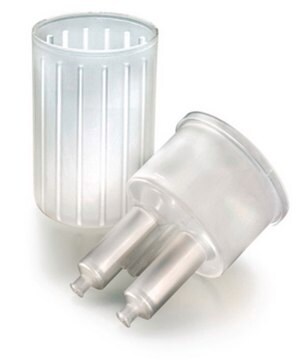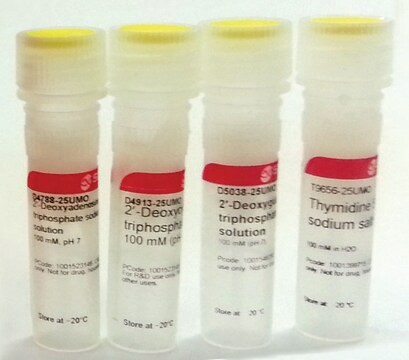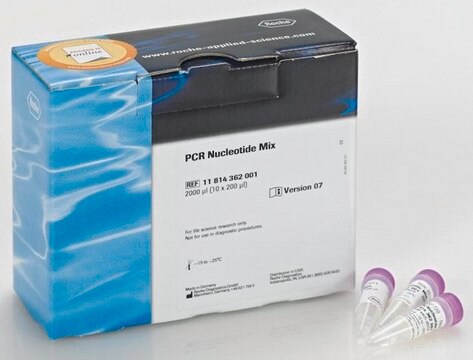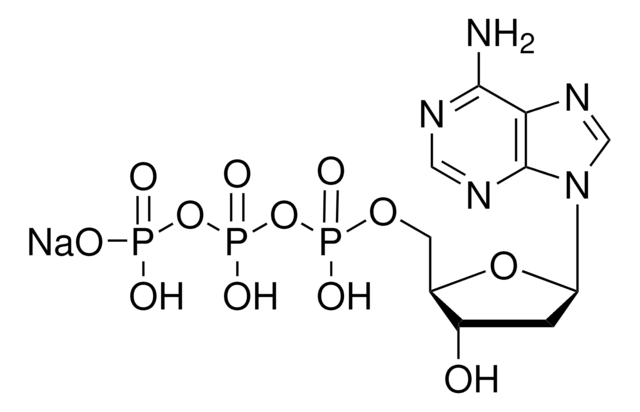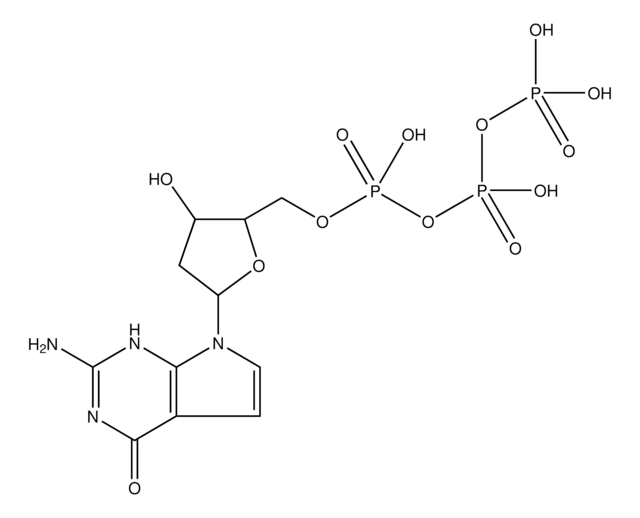DNTPCA1
CleanAmp™ dNTP
Hot-start dNTP mix for improved PCR
Synonym(s):
Deoxynucleotides, dNTP, dNTP Mix
Sign Into View Organizational & Contract Pricing
All Photos(7)
About This Item
UNSPSC Code:
41106305
Recommended Products
form
liquid
feature
hotstart
concentration
10 mM (each dNTP)
color
colorless
shipped in
dry ice
storage temp.
−20°C
Looking for similar products? Visit Product Comparison Guide
General description
We are proud to offer new, improved, CleanAmp dNTPs. CleanAmp dNTPs are modified nucleoside triphosphates that block DNA polymerase nucleotide incorporation. CleanAmp dNTPs are activated by the initial heating step and subsequent denaturing steps in typical hot start PCR cycling conditions. This process limits the amount of activated dNTPs during each cycle of PCR, allowing for more specific and efficient amplification of the desired product and also reducing or completely avoiding mis-priming or primer dimer formation. CleanAmp dNTPs provide a more affordable solution than hot start enzymes for a variety of PCR-based applications.
CleanAmp dNTPs, are a product of TriLink BioTechnologies, Inc. CleanAmp dNTPs are modified nucleoside triphosphates that block DNA polymerase nucleotide incorporation. CleanAmp dNTPs are activated by the initial heating step and subsequent denaturing steps in typical hot start PCR cycling conditions. This process limits the amount of activated dNTPs during each cycle of PCR, allowing for more specific and efficient amplification of the desired product and also reducing or completely avoiding mis-priming or primer dimer formation. CleanAmp dNTPs provide a more affordable solution than hot start enzymes for a variety of PCR-based applications.
Application
- For PCR amplifications that require reduced non-specific amplification
- For multiplex PCR
- For reduction of primer dimers
- Substitute for dNTPs in any PCR reaction
Packaging
2 μmoles: 1 vial, 200 μL, each dNTP at 10 mM in 50 mM Glycine
10 μmoles: 1 vial, 1000 μL, each dNTP at 10 mM in 50 mM Glycine
10 μmoles: 1 vial, 1000 μL, each dNTP at 10 mM in 50 mM Glycine
Legal Information
CleanAmp™ dNTPs are provided to buyer with a non-transferrable right from TriLink BioTechnologies, Inc. to use the purchased CleanAmp™ dNTPs in internal research conducted by the buyer, whether the buyer is an academic, non-profit, or for-profit entity. CleanAmp™ dNTPs are not to be used for human therapeutic or commercial clinical diagnostic use. A license is required for any commercial use of CleanAmp™ dNTPs, regardless of the academic or non-profit status of the using entity. Information about commercial licenses for CleanAmp™ dNTPs may be obtained from TriLink BioTechnologies, Inc. Buyer may not use the CleanAmp™ dNTPs to support the filing of a patent application in any country in the world that contains claims directed to CleanAmp™ dNTPs or uses thereof without the express approval of TriLink BioTechnologies, Inc. Buyer′s right to have and use the CleanAmp™ dNTPs will terminate immediately if you fail to comply with these terms and conditions of this agreement.
CleanAmp is a trademark of TriLink BioTechnologies, Inc.
Storage Class
12 - Non Combustible Liquids
wgk_germany
WGK 2
flash_point_f
Not applicable
flash_point_c
Not applicable
Certificates of Analysis (COA)
Search for Certificates of Analysis (COA) by entering the products Lot/Batch Number. Lot and Batch Numbers can be found on a product’s label following the words ‘Lot’ or ‘Batch’.
Already Own This Product?
Find documentation for the products that you have recently purchased in the Document Library.
Customers Also Viewed
Elena Hidalgo Ashrafi et al.
Current protocols in molecular biology, Chapter 15, Unit 15-Unit 15 (2009-10-10)
Hot-start PCR is a technique that improves PCR performance by reducing nonspecific amplification during the initial setup stages of the PCR. This unit describes hot-start PCR protocols which utilize primers containing temperature-sensitive modifications. The introduction of 4-oxo-tetradecyl (OXT) phosphotriester groups
Natasha Paul et al.
Methods in molecular biology (Clifton, N.J.), 630, 301-318 (2010-03-20)
Hot Start activation approaches are increasingly being used to improve the performance of PCR. Since the inception of Hot Start as a means of blocking DNA polymerase extension at lower temperatures, a number of approaches have been developed that target
Inna Koukhareva et al.
Nucleic acids symposium series (2004), (52)(52), 259-260 (2008-09-09)
Several 3'-ether and 3'-ester derivatives of 2'-deoxyribonucleoside 5'-triphosphates (dNTPs) were prepared. These dNTP derivatives were not substrates for DNA polymerase and did not support primer extension at room temperature. However, by short pre-heating to 95 degrees C in PCR buffer
Franck Court et al.
Genome biology, 12(5), R42-R42 (2011-05-17)
Despite its critical role for mammalian gene regulation, the basic structural landscape of chromatin in living cells remains largely unknown within chromosomal territories below the megabase scale. Here, using the 3C-qPCR method, we investigate contact frequencies at high resolution within
Xinglong Xiao et al.
Journal of virological methods, 187(2), 357-361 (2012-11-13)
Nucleic acid testing (NAT) is valuable for screening blood donors for occult hepatitis B virus (HBV) infection and infection during the window period in countries where HBV is endemic, such as China. An "in-house" NAT (Triplex NAT) was developed for
Our team of scientists has experience in all areas of research including Life Science, Material Science, Chemical Synthesis, Chromatography, Analytical and many others.
Contact Technical Service